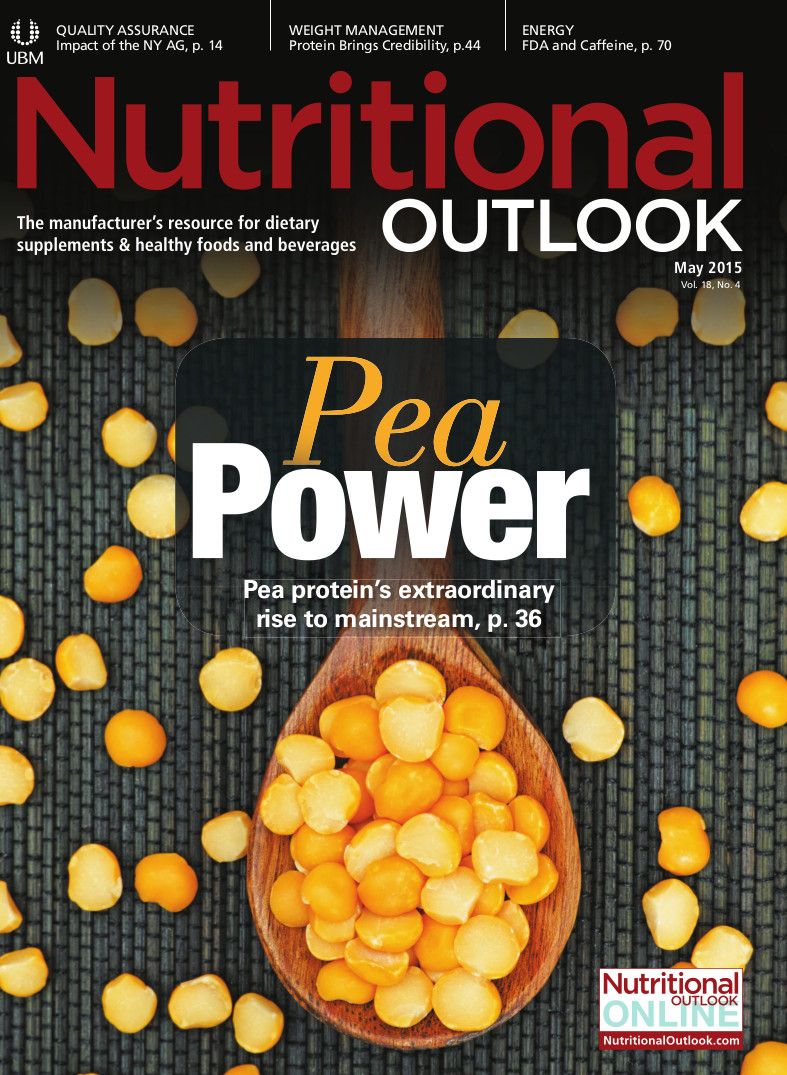Suppliers and Manufacturers Must Cooperate in Regulatory Compliance
Pending food manufacturing regulations mean manufacturers and suppliers must work together toward compliance.

Ask any chef and he or she will say that the first step to any tasteful creation is to utilize quality ingredients that provide consistent, expected characteristics. The same can be said for the production of those ingredients: knowing that the quality and stated characteristics will be consistent from batch to batch is the best way to maintain the production of a high-quality food ingredient. The U.S. FDA requires food manufacturers to have detailed documentation of the components of their product, some of which can only come from ingredient suppliers. Therefore, both manufacturers and ingredient suppliers need to keep in constant communication in order to stay compliant with increasingly stringent FDA regulations.
From a quality assurance standpoint, maintenance of quality and consistency, along with continued analysis for potential contaminants, is a critical part of the production of a safe ingredient. An ingredient supplier must meet criteria necessary for the production, verification, and stability of the final ingredient during shipment, including a valid and complete certificate of analysis (COA) and certification and documentation meeting all Food Safety Modernization Act (FSMA) and Good Manufacturing Practices (GMP) requirements.
Certificate of Analysis
When assessing the ability of a supplier to provide the necessary ingredient in a timely fashion, a food manufacturer should first begin with obtaining a COA of the ingredient to be supplied. A COA is defined as “an authenticated document, issued by an appropriate authority that certifies the quality and purity of pharmaceuticals, and animal and plant products being exported."1
In order to certify quality and purity, the COA must also have a description and limits for substances, such as fiber, antioxidants, or certain phytochemicals, that define the product. A vague COA lacking endpoints that define the ingredient is not very useful; it may be nice to look at, but not provide much else. Specification sheets or COAs should contain the following information:2
- the ingredient statement and any allergens present
- microbial limitations (as necessary)
- nutrition facts for labeling purposes
- shelf life statement
- packaging information
- traceability code and how to read it
- general product description
- key quality attributes (e.g., % fat, % protein, refractive index)
- physical characteristics
- heavy-metal analysis
A well-detailed COA will also help in addressing oncoming needs that the manufacturers are facing with the implementation of FSMA of 2011.
FSMA Regulations
FSMA is the most sweeping food safety reform law passed in over 70 years. This new law shifts the U.S. government from simply responding to contamination to preventing contamination. As a part of FSMA, facilities that manufacture, process, pack, or hold human food are required to register with FDA as food facilities. In addition, FSMA includes a Preventive Controls rule, which requires food facilities to both prepare and implement hazard analysis and risk-based preventive controls, as well as revises the existing current GMP requirements. Although these requirements are not yet final, and changes to the current language are anticipated, the proposed rule provides a good indication of the final language.
As a part of the Preventive Controls rule, the facility must prepare a written food safety plan that includes the establishment and implementation of a risk-based supplier program for raw materials and ingredients that the facility identifies as a significant hazard. The supplier typically controls information concerning the composition of ingredients. Also, the rule states that a supplier approval and verification program must be implemented for both domestic and foreign ingredient suppliers. Also, as a part of the Bioterrorism Act of 2002, domestic and foreign facilities that manufacture, process, pack, or hold food or food ingredients must register with FDA, and FDA must be given advance notice on shipment of imported food.
GMPs
For dietary supplement ingredient suppliers, FDA first introduced regulations in 2007 on GMPs for dietary supplements.3 In comparison, GMP regulations for food processing facilities were first instituted in 19694 and were revised in 1986.5 Processed food and dietary supplement facilities that fall under FDA’s GMP regulations must meet guidelines for all phases of manufacture, from raw-material control (e.g., valid and complete COA information) and facility design and structure information to product traceability, qualification, and validation of operating procedures for testing equipment and methods to analyze different phases of production.
The implementation of the GMP requirements for dietary supplement production has a direct impact on the actions of ingredient suppliers because the ingredient suppliers are now subject to the specification or purchasing requirements of the companies that source their ingredients. A dietary supplement manufacturer must meet a “supplier qualification” GMP guideline, which may include verification of the supplier’s reliability, test results for batch analysis and identity parameters of each ingredient, as well as a consistent auditing program established for each ingredient supplier. Methods and equipment used for identity testing should undergo a validation process to ensure that the results are consistent with national or international standards (e.g., AOAC, AOCS, and ISO).6 For suppliers, records management also includes verification that any substances used in the manufacture of the ingredient, such as solvents, carriers, and processing aids, are also approved for food use, if specified by the food manufacturing qualifications.
Working Together
When first working with a new supplier, the manufacturer should request a sample of the ingredient shipped under typical packing conditions. Once the manufacturer receives the ingredient, the batch of ingredient should again be sampled and analyzed to confirm that it meets the specifications parameters. Any variations between the manufacturer’s results and the supplier’s COA should be immediately discussed and rectified; if parameters critical to the safety or quality of the ingredient are not met, the batch should be rejected.
Suppliers will need to maintain detailed recordkeeping, ingredient identity, and batch consistency, and overall reliability to manufacturers in order to remain competitive when FSMA is fully implemented. Upcoming federal regulations aim to increase both the safety and quality of food that reaches U.S. consumers; for this reason, suppliers and food manufacturers will need to work together in order to sufficiently meet these new FDA requirements. Communication is key.
Ray A. Matulka, PhD, is the director of toxicology at Burdock Group, the leading food safety and regulatory consulting firm headquartered in Orlando, FL.
References
- www.businessdictionary.com/definition/certificate-of-analysis.html. Accessed February 18, 2015.
- Eymard D, “How to Choose a Reputable Ingredient Supplier,” Food Safety Magazine, www.foodsafetymagazine.com/magazine-archive1/junejuly-2009/how-to-choose-a-reputable-ingredient-supplier; 2009.
- Title 21 of the US Code of Federal Regulations (CFR), section 111; Current Good Manufacturing Practice in manufacturing, packaging, labeling, or holding operations for dietary supplements; www.accessdata.fda.gov/scripts/cdrh/cfdocs/cfcfr/CFRSearch.cfm?CFRPart=111.
- FDA: GMPs-Section One: Current Food Good Manufacturing Practices; www.fda.gov/Food/GuidanceRegulation/CGMP/ucm110907.htm. Accessed February 19, 2015.
- 21 CFR §110; Current Good Manufacturing Practice in Manufacturing, Packing, or Holding Human Food; www.accessdata.fda.gov/scripts/cdrh/cfdocs/cfcfr/CFRSearch.cfm?CFRPart=110. Accessed February 19, 2015.
- FDA; Guidelines for the validation of chemical methods for the FDA foods, 2012; www.fda.gov/downloads/ScienceResearch/FieldScience/UCM298730.pdf. Accessed February 19, 2015
Photo © iStockphoto.com/skynesher

FDA revokes authorization to use Red No. 3 as a color additive in food or drugs
January 15th 2025FDA contends that the color additive is safe for humans but is legally obligated by the Delaney Clause of the FD&C act to revoke authorization as research shows the Red No. 3 induces cancer in rats.
Magnesium L-threonate, Magtein, earns novel food authorization in the European Union
December 19th 2024According to the announcement, the authorization is also exclusive to AIDP and its partner company and licensee, ThreoTech, meaning that they are the only parties that can market magnesium L-threonate in the EU for a period of five years.